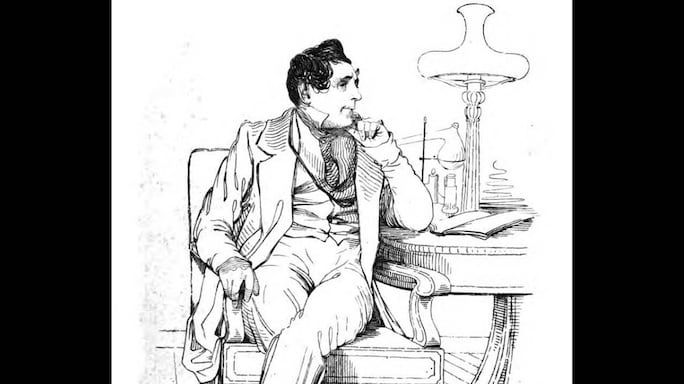- HOME
- /
- Culturescape
- /
- Book Extract
- /
Remembering Henry Piddington, Meteorologist Extraordinaire, And His Prophetic Warnings
Piddington’s warnings fell on deaf ears: To the builders and civil servants who were working on the new city, he must have sounded like a madman—in the measureable, discrete universes that they worked within there was no place for a phenomenon that took birth hundreds of miles away and came storming over the seas
 A portrait sketch of Henry Piddington by Colesworthey Grant published in 1839 in the India Review (Illustration via Wikimedia Commons)
A portrait sketch of Henry Piddington by Colesworthey Grant published in 1839 in the India Review (Illustration via Wikimedia Commons)
Colonial Calcutta, which was for a long time the capital of the British Raj, was founded on the banks of the Hooghly River in the late seventeenth century. It had not been in existence for long before it came to be realized that the river was silting up. By the early nineteenth century, the East India Company had decided in principle that a new port would be built at a location closer to the Bay of Bengal. A site was chosen in the 1840s; it lay some 55 kilometres to the south-east of Calcutta, on the banks of a river called Matla (which means ‘crazed’ or ‘intoxicated’ in Bengali).
At that time, there lived in Calcutta an Englishman by the name of Henry Piddington. A shipping inspector by profession, he dabbled promiscuously in literature, philology and the sciences until his true calling was revealed to him by a treatise, An Attempt to Develop the Law of Storms, written by an American meteorologist, Col. Henry Reid. Published in 1838, the book was an ambitious study of the circular motion of tropical storms. Colonel Reid’s book inspired a great passion in Piddington, and he devoted himself to the field for the rest of his life. It was he who coined the word cyclone, and it is for this that he is best remembered today. But Piddington’s particular interest was the phenomenon of the storm surge (or ‘storm wave’ as it was then called): He would eventually compile a detailed account of storm surges along the coast of Bengal and the devastation they had caused.
 The title page of Piddington's The Horn Book, which introduced the word cyclone (Image via Wikimedia Commons)
The title page of Piddington's The Horn Book, which introduced the word cyclone (Image via Wikimedia Commons)
Because of his familiarity with this subject, Piddington understood that the proposed port on the Matla River would be exposed to extreme cyclonic hazard. Such was his alarm that in 1853 he published a pamphlet, addressed to the then governor-general, in which he issued this ominous warning: "Everyone and everything must be prepared to see a day when, in the midst of the horrors of a hurricane, they will find a terrific mass of salt water rolling in, or rising up upon them, with such rapidity that the whole settlement will be inundated to a depth from five to fifteen feet."
Piddington’s warnings fell on deaf ears: To the builders and civil servants who were working on the new city, he must have sounded like a madman—in the measureable, discrete universes that they worked within there was no place for a phenomenon that took birth hundreds of miles away and came storming over the seas like a "wonderful meteor" (to use Piddington’s words). It was probably the very scale of the phenomenon invoked by Piddington that made it unthinkable to those eminently practical men, accustomed as they were to the ‘regularity of bourgeois life’. The port continued to rise, even through the great uprising of 1857: It was built on a lavish scale, with banks, hotels, a railway station and imposing public buildings. The city was formally inaugurated in 1864 with a grand ceremony: It was named Port Canning after a former governor-general.
 Book cover courtesy Penguin Random House India
Book cover courtesy Penguin Random House India
Port Canning’s claims to grandeur were short-lived. A mere three years after its inauguration, it was struck by a cyclone, just as Piddington had predicted. And even though the accompanying storm surge was a modest one, rising to only six feet, it caused terrible destruction. The city was abandoned four years later (Canning is now a small river port and access point for the Sundarbans). Piddington thus became one of the first Cassandras of climate science.






